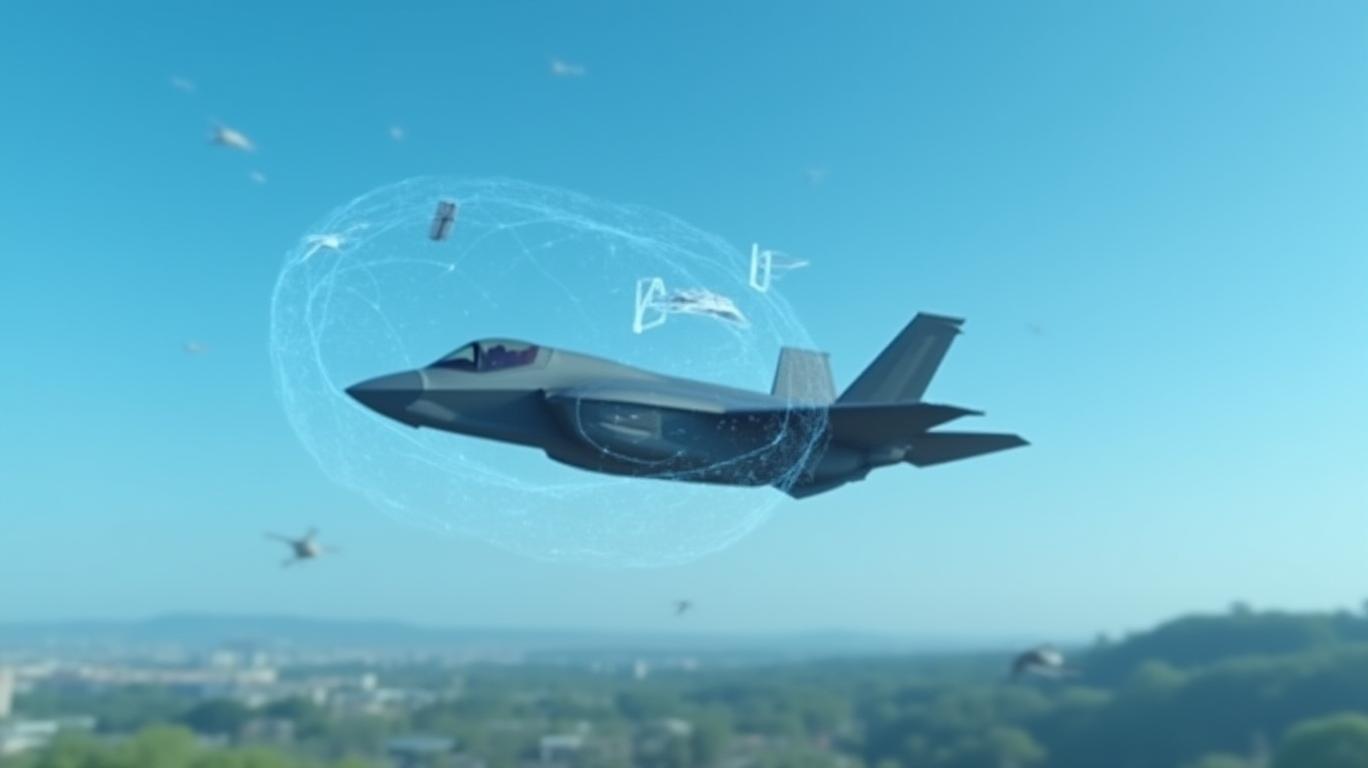Lockheed Martin's F-35 Interoperability Breakthrough: A Catalyst for Global Defense Contracts

The Danish Ministry of Defence’s recent interoperability test of the F-35 Lightning II fighter jet with Lockheed Martin’s DAGGR-2 system has eliminated a critical technical hurdle, unlocking a new era of global defense contracts for
(NYSE: LMT). This breakthrough, which enabled real-time data sharing across domains and continents, has not only erased a key buyer hesitation but also solidified the F-35 as the cornerstone of NATO’s 21st-century defense architecture. For investors, this is a clarion call to position ahead of a multiyear growth spurt fueled by geopolitical urgency and standardized fifth-generation platforms.The Technical Breakthrough: DAGGR-2 and the End of “Not Invented Here” Syndrome
The May 2025 test at Denmark’s Skrydstrup Air Base demonstrated the F-35’s ability to transmit classified data from Texas to Danish forces using DAGGR-2, a revolutionary Open Systems Gateway (OSG). This system bridges communication gaps between disparate military systems—linking F-35s with older platforms like F-16s, ships, satellites, and command centers. By supporting advanced data links (MADL, TTNT) and leveraging commercial satellites (e.g., Starlink), DAGGR-2 eliminates the “stovepipe” interoperability challenges that once deterred buyers from adopting fifth-gen jets.
The result? A $173 billion order backlog for Lockheed Martin now gains even stronger credibility. NATO allies, from Germany to Finland, are accelerating F-35 purchases to replace aging fleets, while emerging markets like Poland and the UAE seek to modernize. With over 600 F-35s expected in Europe by 2035, the DAGGR-2 test has turned a “maybe” into a “must-have.”
The Strategic Shift: Standardization and Pricing Power
The F-35’s success hinges not just on its stealth or sensors but on its role as a networked intelligence hub. By standardizing data-sharing across NATO, DAGGR-2 creates a moat against budget shifts or competitor platforms. Buyers now face a stark choice: adopt the F-35 ecosystem or risk being left behind in a world where multi-domain operations (MDO) are non-negotiable.
This dynamic supercharges Lockheed’s sustainment contracts, which generate recurring revenue from software upgrades, maintenance, and data link integration. With over 900 F-35s already delivered and production ramping to 160 jets annually, LMT’s margin profile is set to expand. The stock’s P/E ratio of 16x—below its five-year average of 18x—now looks unjustified.
Geopolitical Demand: A Tailwind That Won’t Fade
The Ukraine war, China’s military modernization, and Russia’s hybrid tactics have pushed global defense spending to a record $2.7 trillion in 2024. For Lockheed, this isn’t just a cyclical boom—it’s a secular shift. The F-35’s interoperability eliminates a major barrier to sales in key markets like Japan, South Korea, and Taiwan, all of which are racing to counter regional threats.
Meanwhile, DAGGR-2’s use of commercial satellites lowers costs and accelerates deployment, making F-35s accessible even to budget-constrained allies. This scalability ensures Lockheed’s growth won’t be derailed by Pentagon budget squabbles.
The Investment Case: Undervalued at $474, Targeted for $745 by 2028
Lockheed’s stock trades at 27.8% below its $648.53 discounted cash flow (DCF) fair value, offering a margin of safety even as geopolitical risks loom. Analysts project 12%+ EPS growth through 2026, with a consensus price target of $524—yet this barely scratches the surface.
Consider:
- Short-term dips (6% drop by June 2025) present buying opportunities.
- Long-term forecasts see LMT hitting $744.79 by 2028—a 57% gain—as F-35 fleets expand and DAGGR-2 upgrades become mandatory.
- The 2.82% dividend yield adds a cushion, with LMT having raised payouts for 22 consecutive years.
Why Act Now?
The F-35’s interoperability milestone is a once-in-a-decade catalyst. Buyers are no longer choosing between “good enough” and “too risky”—they’re committing to the standard. With a backlog secured through the 2030s and sustainment contracts insulated from budget cuts, LMT is positioned to outperform peers like Raytheon (RTX) and Northrop Grumman (NOC).
Buy LMT at $474. The stock’s undervaluation, combined with its role as NATO’s backbone, makes it a must-own for investors seeking to profit from the defense tech revolution. The next five years will see LMT’s EPS rise to $29.88 by 2026—and that’s just the start.
Disclosure: This analysis is for informational purposes only and does not constitute financial advice. Readers should consult with a licensed professional before making investment decisions.

Comments
No comments yet